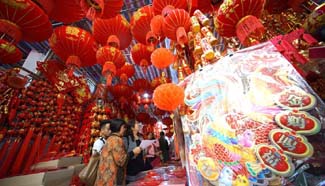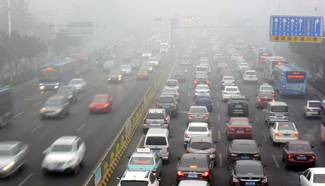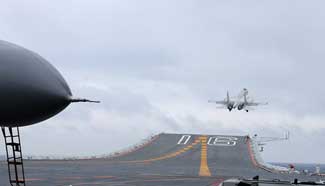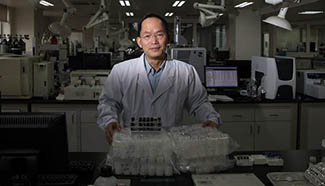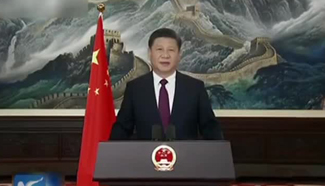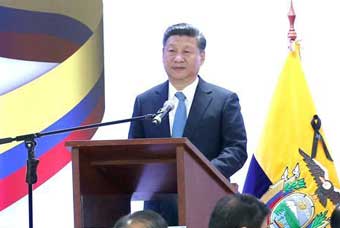BEIJING, Jan. 4 (Xinhua) -- China has stepped up efforts to cut excess and outdated steel capacity, one of the major tasks of the country's on-going supply-side structural reform.
The central government decided to toughen up its tiered electricity pricing to deter outdated steel producers and advance capacity cuts, the top economic planner said Tuesday.
The measure, effective since Jan. 1, will raise the extra price paid by "outdated" steelmakers by 66.7 percent to 0.5 yuan (about 7 U.S. cents) per kwh, according to the National Development and Reform Commission (NDRC).
Since 2004, the NDRC has implemented a three-tier pricing system for eight major energy-intensive industries, including steel-making, categorizing them as "encouraged," "restricted" or "outdated."
Outdated steelmakers are those scheduled to be phased out for poor production technologies and failing to meet green production standards.
Those that do not meet capacity-cutting goals on time face the same penalty as those phased out, while those "restricted" will continue to face an additional 0.1 yuan charge per kwh.
Local authorities are allowed to expand the price gap even further, the NDRC said.
The incentive will help the country's capacity cutting, boost technological upgrading and sharpen competitiveness of the secor.
China's steel sector experienced years of plunging prices and factory shutdowns due to a sluggish economy. However, encouraged by increasing prices since the start of 2016, many steel mills are resuming production.
China's large and medium sized steel mills reported profits of 33.15 billion yuan in the first eleven months of 2016, compared to a loss of 52.91 billion yuan in the same period of 2015, official data showed Tuesday.
The central government reiterated that cutting overcapacity is high on its reform agenda as excess capacity has weighed on the country's economic performance and environment.
Last month, Chinese authorities ordered lenders to ensure loans for competitive steel companies but halt them for those making losses.
The world's largest steel producer and consumer plans to reduce crude steel output by 100-150 million tonnes by 2020 and ease uneven supply-demand in the sector, according to the 2016-2020 steel sector development plan.
Meanwhile, the move is expected to reduce air pollution as outdated steel plants are considered major pollutant emitters.
The steel sector will be modernized and its energy consumption and pollutant emissions will be within national standards by 2020, the plan said.
There should be stricter emissions monitoring and harsher punishments for violators, said Liu Haimin, deputy head of China Steel Development & Research Institute.
More policies such as carbon tax and carbon emission trading will be introduced to increase operating costs for steel plants causing environmental impact and to push for an industrial reshuffle, Liu added.


